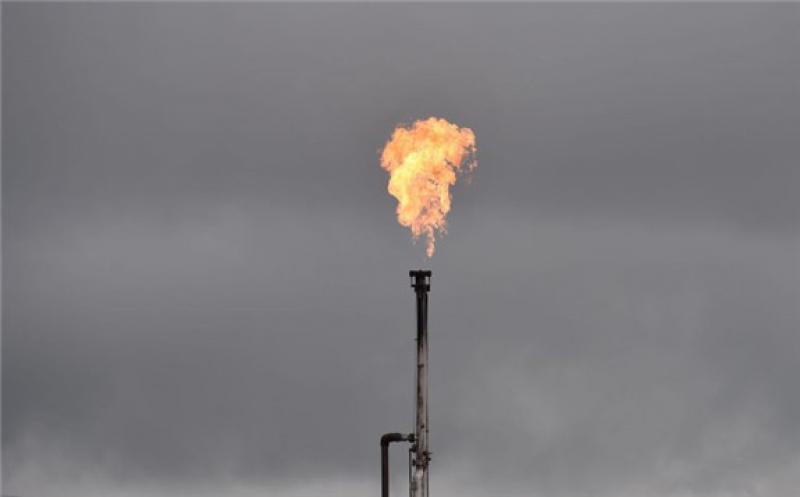
When companies drill for oil, the process can also release natural gas (primarily composed of methane) as a byproduct, called associated gas. For safety reasons and to release pressure in the system, the associated gas needs to be removed. Typically, this has been done by venting (releasing) or flaring (burning) the gas. Of the two, flaring is preferable, since it converts methane, a very powerful greenhouse gas to carbon dioxide, a less powerful one.
But natural gas flares are still wasteful and environmentally harmful. The practice had generally been on the decline since 2002, but amount of gas that was burned off ticked up in 2018, according to new numbers from the World Bank’s Global Gas Flaring Reduction Partnership.
Over the last 20 years, although the production of oil has grown by roughly 30 percent, the amount of associated flares had decreased by 15 percent—a positive sign that the industry was becoming more efficient in its operations and had implemented advanced technologies to lower the environmental footprint of drilling. But some of that progress might now be undone.
In 2018, four countries were responsible for almost 50 percent of all flared gas: Russia for 15 percent, Iraq 12, Iran 12, and the United States 10. The top 10 flaring countries—a list that also includes Algeria, Angola, Libya, Mexico, Nigeria, and Venezuela—were responsible for nearly 75 percent of global flaring.
On these lists, one country—the United States—stands out. It is an outlier in terms of governance, public sensitivity about air pollution, corruption, markets, and infrastructure. But the country is set apart for another reason as well. Unlike the others, U.S. flaring dramatically increased in 2018, spiking by some 50 percent over the prior year, the largest absolute gains of any country. Much of this is due to ongoing flaring practices in Texas and North Dakota, where the bulk of increases in U.S. oil production occurred.
Gas flaring is an economic waste, a waste of one of the world’s most useful and flexible energy sources. For a sense of the scale, the amount flared in sub-Saharan Africa is essentially enough to power the entire subcontinent. The practice also hurts the environment. In Russia, it’s responsible for large amounts of black carbon evident in the Arctic. And in the Permian and the Bakken oil fields, it is contributing to poor air quality in surrounding communities.
But companies still flare for a variety of reasons: For smaller companies especially, making the necessary changes to make rigs more efficient or to capture released methane for the market is expensive, and they may lack access to pipelines or markets. In conflict zones, flaring may result simply from a lack of regulation, expertise, or motivation.
The World Bank’s Global Gas Flaring Reduction Partnership—which works with the Colorado School of Mines, where one of us is based—has been trying to address these problems for decades. The focus, of course, is on supporting the development of better infrastructure, technology, market, and governance approaches to flaring. Finding ways for oil companies to capture and monetize the gas is particularly promising.
For example, Occidental Petroleum recently announced a highly successful methane capture and utilization program in Oman. In 2018, ExxonMobil put out a plan to cut its flaring by 25 percent by 2020 through a combination of technical and financial means. The same year, Azerbaijan’s state oil company, along with BP, captured billions of cubic meters of gas from offshore production facilities and moved them into their gas distribution systems. In Iraq, Shell is working with the government to use some associated gas at new petrochemical plants, which will save them billions of dollars. Gas flaring in Angola has also seen good progress in the past year, largely due to the ability to export the gas through a liquified natural gas plant.
Still, more is required. The technical solutions to flaring exist. Implementing them will require well-designed and well-enforced regulations and policies that can create the appropriate incentives and penalties for companies and governments in very different stages of development—and sometimes in conflict zones.
As the environmental health effects of flaring (which may include increased rates of asthma and other respiratory problems) become more understood, indiscriminate use of the practice throughout western Texas and North Dakota is likely to generate increased scrutiny by Congress, the Texas Railroad Commission, and other regulators or legislators.